Hands On With the Nexus 5X and 6P
by Brandon Chester on September 29, 2015 4:05 PM EST- Posted in
- Smartphones
- Mobile
- Nexus
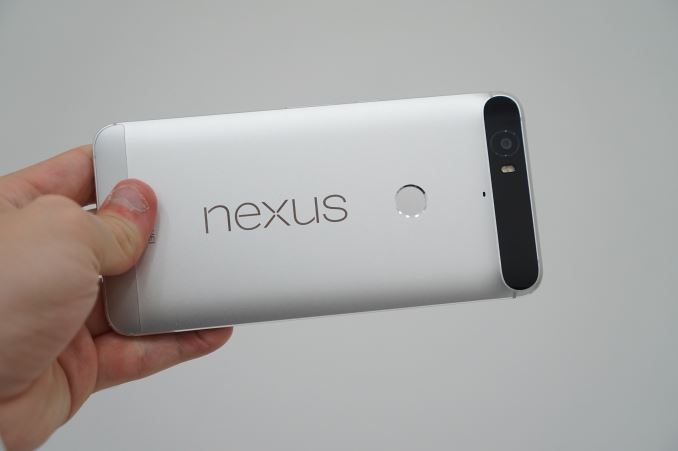
Today Google announced several new devices at their September 2015 launch event in San Francisco. By far the most anticipated devices were the two new Nexus phones that were announced. The first is the Nexus 5X made by LG, a successor to the Nexus 5 which was released nearly two years ago in late 2013. The second is the Nexus 6P, which is made by Huawei and replaces the existing Nexus 6 made by Motorola. Both of these phones bring significant improvements over their predecessors, particularly the Nexus 5X which can take advantage of all the advancements made in the past two years. Below you can see the specifications for each of these new devices along with the specs of their predecessors to see how they compare.
| Google Nexus Smartphones | ||||
| LG Nexus 5 | LG Nexus 5X | Motorola Nexus 6 | Huawei Nexus 6P | |
| SoC | Snapdragon 800 | Snapdragon 808 | Snapdragon 805 | Snapdragon 810 |
| GPU | Adreno 330 | Adreno 418 | Adreno 420 | Adreno 430 |
| RAM | 2GB LPDDR3 | 3GB LPDDR3 | 3GB LPDDR4 | |
| Display | 5.0-inch 1920 x1080 IPS LCD | 5.2-inch 1920 x 1080 IPS LCD | 5.96-inch 2560 x 1440 AMOLED | 5.7-inch 2560 x 1440 AMOLED |
| Wireless | 1x1 802.11a/b/g/n/ac BT 4.2, NFC | 2x2 802.11a/b/g/n/ac BT 4.2, NFC | ||
| Storage | 16/32GB | 32/64GB | 32/64/128GB | |
| I/O | microUSB, 3.5mm audio | USB Type-C, 3.5mm audio | microUSB, 3.5mm audio | USB Type-C, 3.5mm audio |
| Size / Mass | 137.84 x 69.17 x 8.59mm, 130g | 147.0 x 72.6 x 7.9 mm, 136 grams | 159.26 x 82.98 x 10.06mm, 184g | 159.3 x 77.8 x 7.3mm, 178 grams |
| Battery | 2300 mAh (8.74Wh) | 2700mAh (10.26Wh) | 3220 mAh (12.236Wh) | 3450mAh (13.11Wh) |
| Camera | Rear Facing 8MP, 1/3.2", (Sony IMX179), F/2.4 Front Facing 1.3MP |
Rear Facing 12.3MP with 1.55µm pixels, F/2.0 Front Facing 5MP, F/2.0, 1.4µm |
Rear Facing 13MP, 1/3.06" (Sony IMX214), F/2.0. Front Facing 2.1MP |
Rear Facing 12.3MP with 1.55µm pixels, F/2.0 Front Facing 8MP, F/2.0, 1.4µm |
| SIM | MicroSIM | NanoSIM | ||
| Launch Price | $349 (16GB) | $379 (16GB) | $649 (32GB) | $499 (32GB) |
The Nexus 5X is similar to the Nexus 5 in some ways but different in others. The chassis is noticably thinner, although the camera protrudes a fairly significant amount. The device has gotten larger in the other dimensions as a result of its larger display. However, it's not that much larger, and during my time with it I never felt that it was difficult to hold. The SoC moves from Qualcomm's Snapdragon 800 to Snapdragon 808, with the amount of RAM and internal NAND remaining the same. The battery capacity receives a significant bump, going from 8.74Wh to 10.26Wh. As for the camera, it's greatly improved. The Nexus 5 was never known for having an amazing camera, and with these new Nexus phones Google appears to have implemented a custom camera sensor. It's a 12.3MP sensor with 1.55 micron pixels, which roughly equates to a 1/2.3" sensor format.
The back of the Nexus 5X feels similar to the material used in the black Nexus 5. There's also a blue model and a white model, and while I didn't get to try the white model the blue version seemed to have the same texture as the black one. The design of the phone diverges significantly from the appearance of the Nexus 5. There's no more raised black ring around the camera, which makes the current Nexus 9 a bit of a loner as it's the only device left that has that design accent. The camera has also been moved to the center of the back, while on the Nexus 5 it was situated in the upper corner. Something worth noting is that the Nexus 5X and 6P both lack OIS, something that existed on their predecessors. Google's rationale is that you won't need long exposures as the camera sensor and pixel size is large enough to work well without it. Whether or not that is true remains to be seen, but OIS is still a useful feature and I think many users who are hoping to upgrade from an existing Nexus smartphone will be sad to see it gone.
On the software side, Android Marshmallow has a significantly improved camera app. Google has addressed many of the issues with menus and settings being difficult to find, and I also noticed that the camera preview frame rate on the Nexus 5X and 6P was much higher than on the Nexus 5 and 6.
Below the camera is Google's new fingerprint sensor. According to Google it can recognize a finger in under 600ms and has a very low error rate. It's difficult to say how it compares to other devices, and I wasn't able to get time to use it, so that will have to wait for when we actually review the Nexus 5X. The position on the back seems to be well chosen, and because it also will wake up the phone it doesn't suffer from the issue with some early rear-mounted fingerprint scanners which is that you had to wake the device first.
As for the front of the phone, there's not a whole lot to say. It's dominated by the display, with the earpiece on the top and a single speaker on the bottom and a front-facing camera to the left of the top speaker. The display itself seemed very good, and the color rendition looked similar to the Nexus 5 which is a good sign. While the Nexus 6P has an AMOLED display, the Nexus 5X is an IPS LCD.
Next is the Huawei-made Nexus 6P. Every aspect of the device feels like a large improvement over the Nexus 6. The first thing that stood out to me is the size. The Nexus 6 was extremely large and I couldn't hold it properly in really any circumstance. The Nexus 6P takes a step back to a 5.7" display, and the dimensions of the phone itself are not much larger than the iPhone 6s Plus despite the larger screen. Of course, you end up losing some real estate to the on screen buttons while the iPhone has a physical home button, but the point is that the phone is much easier to hold and use than the Nexus 6 was. The thickness also contributes to this as well, as the Nexus 6P is almost 3mm thinner than the Nexus 6.
Beyond the dimensions, the construction and feel of the phone is miles ahead of the Nexus 6. It's an aluminum unibody construction with a diamond cut edge edge, and the primarily plastic construction of the Nexus 6 isn't even remotely comparable. It's also fairly light considering the aluminum build and its size.
Something worth noting is that Google seems to have given Huawei and LG a lot of freedom when designing these new phones. The Nexus 5X doesn't share many visual characteristics with the 6P apart from the Nexus logo on the back and the fingerprint scanner. Rather than mounting the camera in the middle, Huawei has put it in the upper left corner like the old Nexus 5 did. The entire top of the back also has a slightly raised black bar. I'm honestly not a fan of this, as it just interrupts what should be a continuous aluminum surface.
Like the Nexus 5X, there's not a whole lot to say about the front of the Nexus 6P. It has stereo speakers, a front-facing camera, and a large display. The 6P bumps the front camera resolution up to 8MP from the 5X's 5MP, with a corresponding increase in sensor size to maintain the 1.4 micron pixel size.
The display is the part of the Nexus 6P that I was most curious about. The Nexus 5 was notable for having a very accurate display despite its low price, and with the Nexus 7 also having accurate calibration it was hoped that Google would continue this across all of their products. Unfortunately, the Nexus 6 shipped with a very poorly calibrated AMOLED display with low brightness. When I first used the Nexus 6P I was very upset to see that it was clearly oversaturated like the Nexus 6, but there's more to the story this time around. In the Nexus 6P's developer settings there is a switch to enable an sRGB mode, and when this switch is turned on the Nexus 6P's display appears to have similar color rendition to the Nexus 5X which is a very good sign. While we'll need to get a review unit in order to analyze all of the display's attributes, I am hopeful that Google has recognized and fixed the issues with the Nexus 6's display in the Nexus 6P.
On the top of the Nexus 6P you'll find a 3.5mm audio jack, whereas you'll have to move to the bottom to find it on the Nexus 5X. However what you won't find on the bottom of either Nexus phone is a USB Micro-B port; Google has decided to be forward looking, and like the Chromebook Pixel the new Nexus smartphones use the USB Type-C connector for data and charging. While this will come with some pain in the short run as users won't be able to use existing USB Micro-B cords, I think the benefits are worth it.
Both new Nexus devices also come with the new Android Sensor Hub. This essentially refers to the different sensors that the devices include, and how they are now controlled and managed by a dedicated processor rather than the device's application processor. This is important for features like Doze in Android Marshmallow, as it allows Google to use minimal power to check the status of sensors and determine whether or not to go into deep sleep.
For me personally, the Nexus 5X is the most interesting of Google's two new Nexus phones. I always like to see what vendors can do when they're targeting a price far less than that of a flagship smartphone. The Nexus 6P definitely has its appeal too though, and we'll be running both of them through our standard suite of tests in order to see how they compare to the competition. If you're already convinced that you want the Nexus 5X or 6P you can pre-order them online now from the Google Store so long as you live in the US, UK, Canada, Japan, or Ireland. The Nexus 5X starts at $379 and comes in black, white, and blue, while the Nexus 6P starts at $499 and comes in standard aluminum, white, and black.


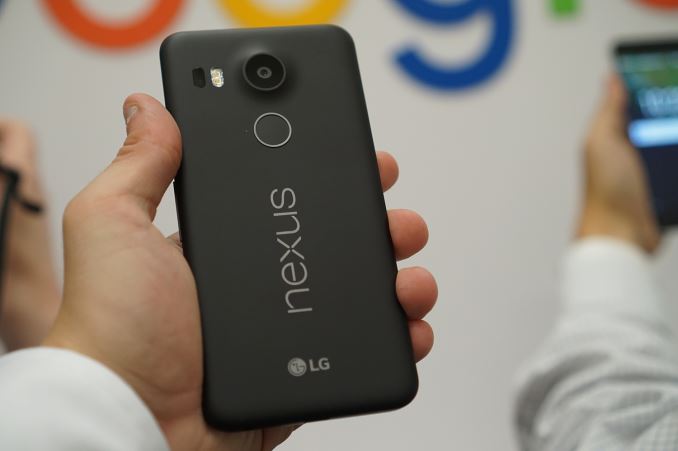
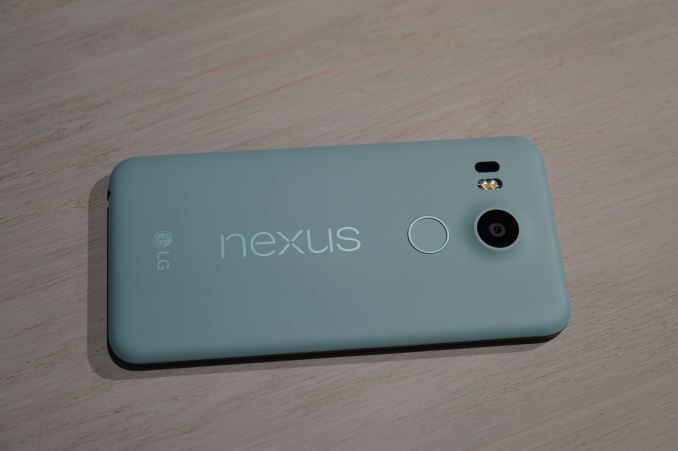

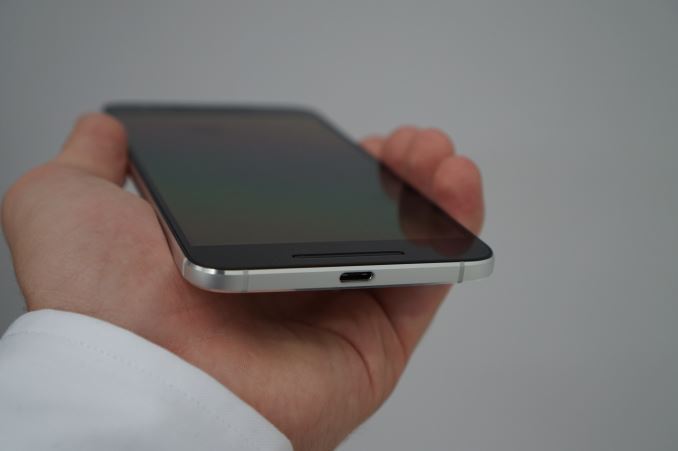
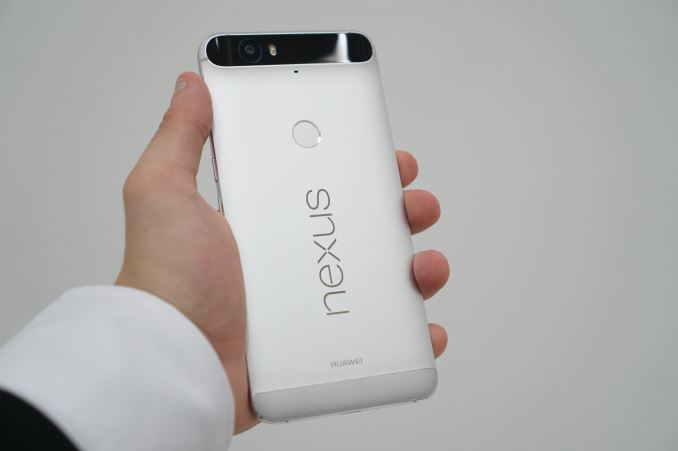
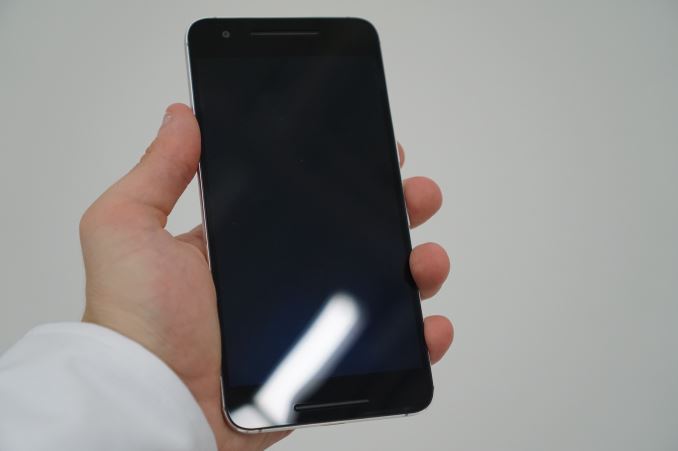
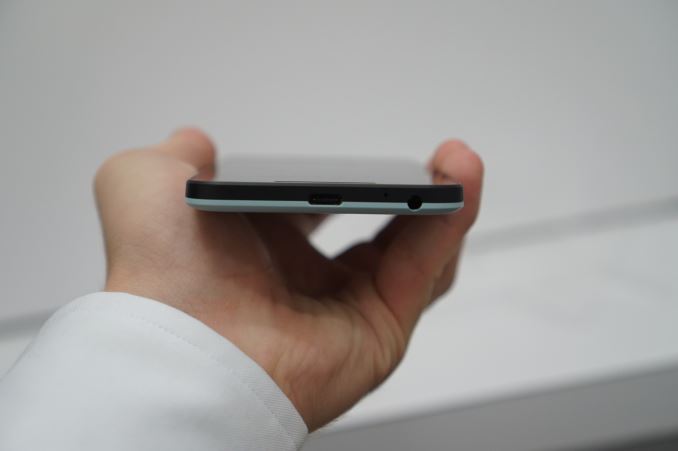








116 Comments
View All Comments
gg555 - Tuesday, September 29, 2015 - link
One other thought. It really doesn't matter what size the pixels are. We've played the "ultrapixel" game before (hello HTC). What matters is the physical size of the sensor. If it's a 1/2.3 sensor as is becoming more common in flagship phones these days, then it will let in the same amount of light as any other sensor that size, regardless of the number of pixels crammed into that space. And it will have about the same degree of low light performance.Large pixels might give you less noise, at the cost of lower resolution, depending on how the phone handles the image processing. Larger pixels will definitely not be better than OIS for low light--which has been demonstrated many times before in other phones. The king of the low light phones either have OIS or have huge sensors in physical size, like the Nokia 808 with it's 1/1.2 sensor.
gg555 - Tuesday, September 29, 2015 - link
I think that someone else linked to this, but here is DxOMark's analysis of the Nexus 6P camera:http://www.dxomark.com/Mobiles/Google-Nexus-6P-rev...
I take DxOMark wiht a grain of salt, since they don't do really side by side photo comparisons. But some of the comments in their notes are telling.
1) They comment: "Visible irregularities in exposure, color, texture and noise due to HDR+ mode activation in low light conditions." In other words, Google trumpeted low light performance of the larger pixels is actually a gimmick achieved through HDR. Lame.
2) The comment: "Strong jello effect due to the stabilization provides unpleasant videos during motions scenes." And that is what happens when you get rid of OIS.
Every time someone claims to have improved camera performance with some special pixel trick or awesome digital image stabilization because of all the process power it turns out to be the hogwash that everyone should know it is.
There are some remarkably basic elements to photography that are determined by physics. No trick of technology is going to change the physics of light. As I say above, at the end of the day, for low light and color accuracy it's the physical size of the sensor that matters, not the pixels. And nothing beats OIS for image stability, since it is physically compensating for camera movement, not trying to post-process it away.
neoraiden - Tuesday, September 29, 2015 - link
Have you read the reviews of the other phones with OIS? The Jello criticism comes up for all of them. Also the science behind what they're saying is sound. There are two ways to gather more light:1. Leave the shutter open for a longer exposure, often achieved using OIS or a tripod, This is useless for moving objects though.
2. Include a larger sensor that captures more light over a shorter time frame, this is one of the biggest reasons why nearly all dslr's will always outperform a mobile phone.
Google decided that instead of using a smaller sensor with OIS they could get better photos with a much larger sensor that didn't have OIS.
Also post processing is essential to digital photography and even more so for mobile phones given how small the sensors are. Google may get the post processing wrong sometimes, but reading the reviews of other handsets and seeing the phone ranked 2nd, I get the impression they think the camera is quite good.
"-Impressive detail preservation in low light conditions, by far the best tested to date." This quote from the pros section alone suggests why their decision to include a larger sensor with relatively large pixels makes sense.
gg555 - Wednesday, September 30, 2015 - link
You clearly did not understand what I was saying about larger pixels. The Nexus 6P has larger pixels than most flagship phone camera, not a physically larger sensor. In fact the point about the benefits of a physically larger sensor, that you seem to think you're point it, was my point. It's pretty clearly right their in both of my posts, that you reply to. I write: "What matters is the physical size of the sensor."So I don't know what to say, since your point, was my point.
What your'e not getting is that Google is not claiming to have an especially larger sensor. They claim to have larger pixes. Well, you could have a physically tiny 1/4 sensor and still have 1.55µm pixels like the 6P does, you just would have less pixels. For a given sensor size you can either have more pixels, higher resolution, but smaller pixels, or less pixels, lower resolution, and larger pixels. But it's just a gimmick. It's not pixel size that matters, it's overall sensor size that matters.
Heck, we don't even know the size of the 6P sensor yet. It's probably safe to assume it's 1/2.3 or 1/2.5 since that's what's going into flagships these days. And it is very strange that Google makes a big deal about the irrelevant pixel size, but fails to disclose the sensor size, the thing that actually matters.
In any case, if it is a 1/2.3 sensor then it will have roughly the same low light performance as other 1/2.3 sensors, even if they are 20 MP sensors and have smaller pixels.
So anyway, you've just missed the point.
*
As for OIS, not every OIS system is a good as every other one, but they are all better than digital image stablization. And jelloing in video is primarly an effect of digital image stablization. So I just don't agree with you on this one.
misiu_mp - Thursday, October 1, 2015 - link
You got it backwards. It is the pixel size that matters for noise and low-light performance, not just the sensor size.A same-size sensor with less but larger pixels will give better image quality, all things being equal.
gg555 - Wednesday, October 7, 2015 - link
No, that's wrong. Pixel size matters for noise. But sensor size matters for low light performance. A same size sensor with less but larger pixels will have the same low light performance. It's the surface area of the sensor that determines how much light it can capture. It doesn't matter if you break that up into two pixels or many millions of pixels.MattCoz - Tuesday, September 29, 2015 - link
What other flagships have a 1/2.3" sensor? The S6 Edge and One Plus 2 have 1/2.6" sensors and the Moto X Pure has a 1/2.4" sensor. So the Nexus sensor is bigger than those flagships.gg555 - Wednesday, September 30, 2015 - link
I was just guessing that the 6P might have a 1/2.3 sensor, so you can't conclude it's better than the OnePlus 2 or Moto X based on my guess as if it were a fact. Maybe it will be 1/2.5. If Google is serious about low light performance, then it better at least be somewhere in the 1/2.something range. If it's just a 1/3 sensor with larger pixels, then it's even more of a gimmick (along the lines of HTC's "ultrapixels" in the One) than I already think. (Indeed, the iPhone 6 Plus does exactly this sort of gimmick with 1.5µm pixels--like the 6P--in a 1/3 sensor.)But, those phones were late to the larger sensor party. Sony has had 1/2.3 sensors in the Xperia phones, since the Z1. The Galaxy S5 has a 1/2.5 sensor. The Galaxy S6 inexplicably has a smaller 1/2.6 sensor. And of course, nobody beats Nokia, who put a 1/2.5 sensor in the N95 eight (!) years ago.
Anyway, until we know the size of the actual sensor in the 6P, as opposed to "pixel size" nonsense, we won't really have meaningful information. And the omission of OIS can only hurt low light performance, no matter the sensor size (why take one step forward and one step back at the same time?).
Also, let me emphasize again, that DxoMark points out in their notes that the 6P was automatically going into HDR+ mode, in low light conditions. That extremely suggests that Google is using gimmicks, rather than a high quality sensor, to create the superficial appearance of good low light performance, for unsophisticated users who don't know how to recognize the other deleterious effects that HDR+ will have (like the noise that DxoMark points out).
neoraiden - Wednesday, September 30, 2015 - link
It is a 1/2.3" sensor which is larger than the rest with OIS and is stated in the dxo description. My point is that Google made a trade off. Now you may think that's a gimmick, but pixel size matters in terms of light capture especially in small devices. OIS may be more be more beneficial in some circumstances , but it is a trade off. e.g. when shooting moving objects OIS is less likely to "freeze" the object in the photo due to the longer capture time. The Iphone and HTC one achieved their stated goals of getting more light in low light per pixel, just they made tradeoffs in other areas to achieve that, namely resolution.OIS may have made the images better, we'll never know, but my guess is google weren't getting better images from their OIS prototypes so decided against it. If the HDR mode bothers you, don't shoot in auto on the camera, use a different camera app or just don't buy the phone.
Also most users are unsophisticated users, who won't recognise it or even if they do won't pixel peep enough to care. Your opinion is fine to have, but it's clearly not a fact as dxo have ranked the camera 2nd currently above many cameras with great OIS and says the 6P is a serious contender for mobile photography.
Everyone can have their opinion but my guess is most pictures are coming out pretty decent compared to other phones which is what matters in the end.
gg555 - Wednesday, September 30, 2015 - link
Yes, DxoMark does say it's a 1/2.3 sensor. I missed that. So that is good, if it's accurate.But pixel size really isn't that important. You're still wrong on that. As I said from my first post, that you replied to, it's the physical sensor size that matters. So the imporant thing here is the 1/2.3 sensor, not the pixels.
I don't know why Google made a big point about the pixel size and failed to mention the sensor size. I suppose for the sake of PR they felt the need to explain the relatively low (for a current flagship) 12.3 MP sensor, when everyone else is going with 16 or 20 MP. Of course, there's no benefit for most people for super high resolutions like 16 and 20 MP and there are some downsides (more noise). Even 12.3 MP is unncessary for most people.
As for OIS, again, I just think you're wrong. And you keep shifting your argument. Is OIS perfect for everything? No. It's true that if you can't control the shutter speed (like on a phone) then for photos of action shots you may not "freeze" your subject. Although that is not an inherent problem with OIS, that is a problem with the fact that you can't control the shutter speed. Very high end DSLRs with OIS don't have this problem, because of course you can control the shutter speed. But if that really is an issue for someone, there are about a bazillion camera apps for Android that let you control shutter speed, so it would be beyond silly to forgo OIS for this reason.
But the topic was the value of OIS for video, as compared to digital image stablization, which is indisputable--I suppose why you changed the subject to try to find some other issue with OIS. And of course OIS is also benefitial for low light photography. As I said it need not be a choice between OIS or a larger sensor (as you keep trying to make it), you can have both (if Google was really serious about stepping up the game for photos in Nexus phones they indeed would have kept OIS, instead of improving one thing, while making something else worse).
And given the huge camera hump on the 6P, I don't why Google didn't bother with OIS (space concerns are often cited as a reason not to have OIS). LG and Samsung certainly have chose to use OIS in combination with larger sensors. And of course, Nokia put OIS in several phones with larger 1/2.5 sensors like the 930 and 1520 and of course in the 1020 with it's enormous 1/1.5 sensor has OIS. So the idea that somehow once you get to a certain sensor size OIS is unnecessary for low light performance (and really even 1/2.3 is not that big and is ancient technology in the digital photogaphy world) is quite a bogus argument. Also, companies often noted for camera quality are moving in the direction of putting OIS in phones more, not less, futher making Google decision bizarre.
I will finally also say that DxoMark's ranking of phone cameras is relatively meaningless. They do technical analyses of phone cameras, they don't do real world photo tests, taking many photos in different situations, examing the images, and comparing them side by side with other phones. DxoMark ranks many phones quite highly, which everyone who does real photo analyses agrees aren't very good. As only one absurd example, they rank the Nexus 6 (which everyone agreed was yet another below average phone camera from Google) above the Nokia 808 with it's massive 1/1.2 sensor (and other advanced optics) that most be agree is the greatest phone camera ever made and still years and years beyond anything else that exists. So if you're basing your arguments and expectations from the 6P on the DxoMark rankings, then you are really missing the point.